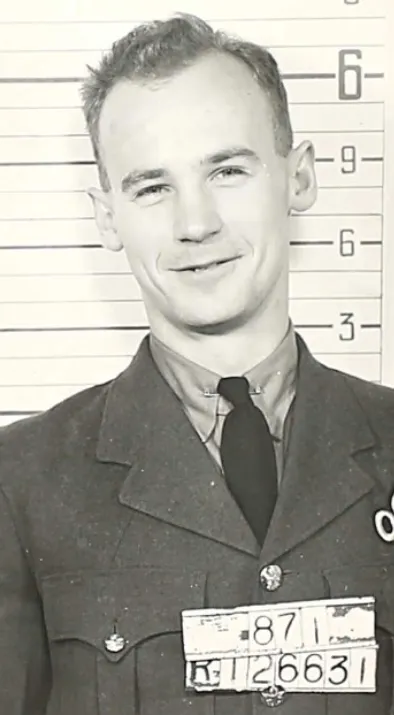Brown, Clifford Althea
Killed in Action 1944-02-15


Birth Date: unkown date
Born:
Home:
Enlistment:
Enlistment Date: Unknown
Service
RAFVR
Unit
622 (B) Sqn- Squadron (RAF)
Bellamus Noctu We wage war by night
Base
RAF Mildenhall
Rank
Sergeant
Position
Sergeant
Service Numbers
1620541
Target
 Berlin Germany
Berlin Germany
First Burial
 Groesbeek Canadian War Cemeter, Holland
Groesbeek Canadian War Cemeter, Holland
Lancaster Mk.I W4272
Bombing Berlin Germany 1944-February-15 to 1944-February-15
622 (B) Sqn (RAF) Mildenhall
Battle of Berlin
After a rest of more than 2 weeks for the regular bomber squadrons, 891 aircraft - 561 Lancasters, 314 Halifaxes, 16 Mosquitoes -were dispatched. This was the largest force sent to Berlin and the largest non-1,000 bomber force sent to any target, exceeding the previous record of 826 aircraft (which included Stirlings and Wellings tons) sent to Dortmund on the night of 23/24 May 1943. It was also the first time that more than 500 Lancasters and more than 300 Halifaxes were dispatched. The quantity of bombs dropped, 2,642 tons, was also a record.
The German controllers were able to plot the bomber stream soon after it left the English coast but the swing north over Denmark for the approach flight proved too far distant for many of the German fighters. The German controller ordered the fighters not to fly over Berlin, leaving the target area free for the Flak, but mapy fighters ignored him and attacked bombers over the city. The diversion to Frankfurt¬on-Oder failed to draw any fighters: 43 aircraft - 26 Lancasters, 17 Halifaxes - were lost, 4·8 per cent of the force.
Berlin was covered by cloud for most of the raid. Heavy bombing fell on the centre and south-western districts but many places out in the country again re-corded bombs, with 59 people being killed there. Damage in Berlin was extensive with 599 large and 572 medium fires and nearly 1,000 houses and 526 temporary wooden barracks, of which there were now a large number in Berlin, destroyed. Some of Berlin's most important war industries were hit, including the large Sie-mensstadt area. 320 people were killed - 196 civilians, 34 service personnel, 9 air-raid workers, 80 foreign workers and 1 prisoner of war. The diminishing proportion of civilian casualties reflects the large-scale evacuation which had now taken place but a further 260 civilians were recorded as being 'buried alive' and it is not known how many of these survived,
This was really the end of the true 'Battle of Berlin'; only one more raid tool pince on the city in this period and that was not for more than a month.
source: The Bomber Command War Diaries, Martin Middlebrook and Chris Everitt
Lancaster W4272
Avro Lancaster

Canadian Warplane Heritage Museum
The Avro Lancaster is a British Second World War heavy bomber. It was designed and manufactured by Avro as a contemporary of the Handley Page Halifax, both bombers having been developed to the same specification, as well as the Short Stirling, all three aircraft being four-engined heavy bombers adopted by the Royal Air Force (RAF) during the same wartime era.
The Lancaster has its origins in the twin-engine Avro Manchester which had been developed during the late 1930s in response to the Air Ministry Specification P.13/36 for a capable medium bomber for "world-wide use". Originally developed as an evolution of the Manchester (which had proved troublesome in service and was retired in 1942), the Lancaster was designed by Roy Chadwick and powered by four Rolls-Royce Merlins and in one version, Bristol Hercules engines. It first saw service with RAF Bomber Command in 1942 and as the strategic bombing offensive over Europe gathered momentum, it was the main aircraft for the night-time bombing campaigns that followed. As increasing numbers of the type were produced, it became the principal heavy bomber used by the RAF, the Royal Canadian Air Force (RCAF) and squadrons from other Commonwealth and European countries serving within the RAF, overshadowing the Halifax and Stirling. Wikipedia
 Library and Archives Canada Service Files (may not exist)
Library and Archives Canada Service Files (may not exist)


 Lancaster Bomber
Lancaster Bomber Wikipedia
Wikipedia Harold A Skaarup Web Page
Harold A Skaarup Web Page